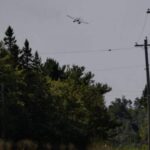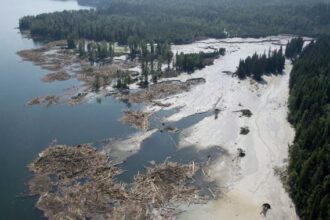The scorched earth of northern Saskatchewan has become a backdrop to a crisis of communication as hundreds of evacuees from remote communities struggle to receive timely updates about their homes and loved ones. As wildfires continue to rage across the province’s northern region, a growing chorus of frustration is emerging from evacuation centers, where residents claim they’re being left in an information vacuum.
“We’ve been here for five days with barely any updates,” said Marie Lavallee, a 63-year-old elder from the Pelican Narrows community, currently sheltering at a Regina gymnasium. “I don’t know if my house is still standing or if our community buildings have survived. The not knowing is almost worse than the evacuation itself.”
The Saskatchewan Public Safety Agency (SPSA) has established evacuation centers in Regina, Saskatoon, and Prince Albert, housing over 7,000 evacuees from communities including Pelican Narrows, Sandy Bay, and Southend. While basic needs like food, shelter, and medical care are being provided, many evacuees report that information—perhaps their most pressing need—remains critically scarce.
Provincial officials maintain they’re providing twice-daily briefings at evacuation centers, but many evacuees say these sessions often lack specific details about individual communities and properties. The communication gap appears particularly pronounced for elderly residents and those without access to social media or smartphones.
“There’s a significant digital divide at play here,” explained Dr. Hannah Richards, disaster management specialist at the University of Saskatchewan. “While younger evacuees can sometimes access community updates through Facebook groups or text messages, older residents and those without technology are completely dependent on official channels that aren’t always delivering information effectively.”
The SPSA has defended its communication protocols, noting the challenge of providing real-time updates when wildfire conditions change rapidly. “We understand people are anxious for information, but our priority must be accuracy over speed,” said Mark Andrews, SPSA communications director. “We’re working to improve our information delivery systems, particularly for our most vulnerable evacuees.”
Several community leaders have stepped in to bridge the information gap. Dorothy Bear, a teacher from Sandy Bay, has established an impromptu communication hub at the Saskatoon evacuation center, collecting information from community members with connections to emergency personnel and disseminating it to fellow evacuees.
“People just need to know what’s happening—is the school still standing? Has the fire reached the west side of the community? These aren’t just buildings; they’re our lives,” Bear explained.
The situation highlights a critical weakness in emergency management protocols that experts say deserves immediate attention. With climate change increasing the frequency and intensity of wildfires across Canada, the need for robust evacuation communication systems has never been more apparent.
Provincial Emergency Measures Organization officials acknowledged the concerns in a statement Tuesday, promising to “review and enhance communication protocols” following the current crisis. Meanwhile, they’ve announced the deployment of additional community liaisons to evacuation centers and the creation of a dedicated hotline for property-specific information.
For evacuees like Thomas Morin, who fled Pelican Narrows with nothing but the clothes on his back and his medication, these measures can’t come soon enough. “When your whole life might be burning to the ground, you deserve to know what’s happening. We’re not just numbers in a disaster plan—we’re people with homes and histories at stake.”
As Saskatchewan grapples with what meteorologists are calling an unprecedented fire season, the question remains: in an age of instant communication, why are those most affected by disaster still finding themselves in the dark about their own communities’ fate?
























